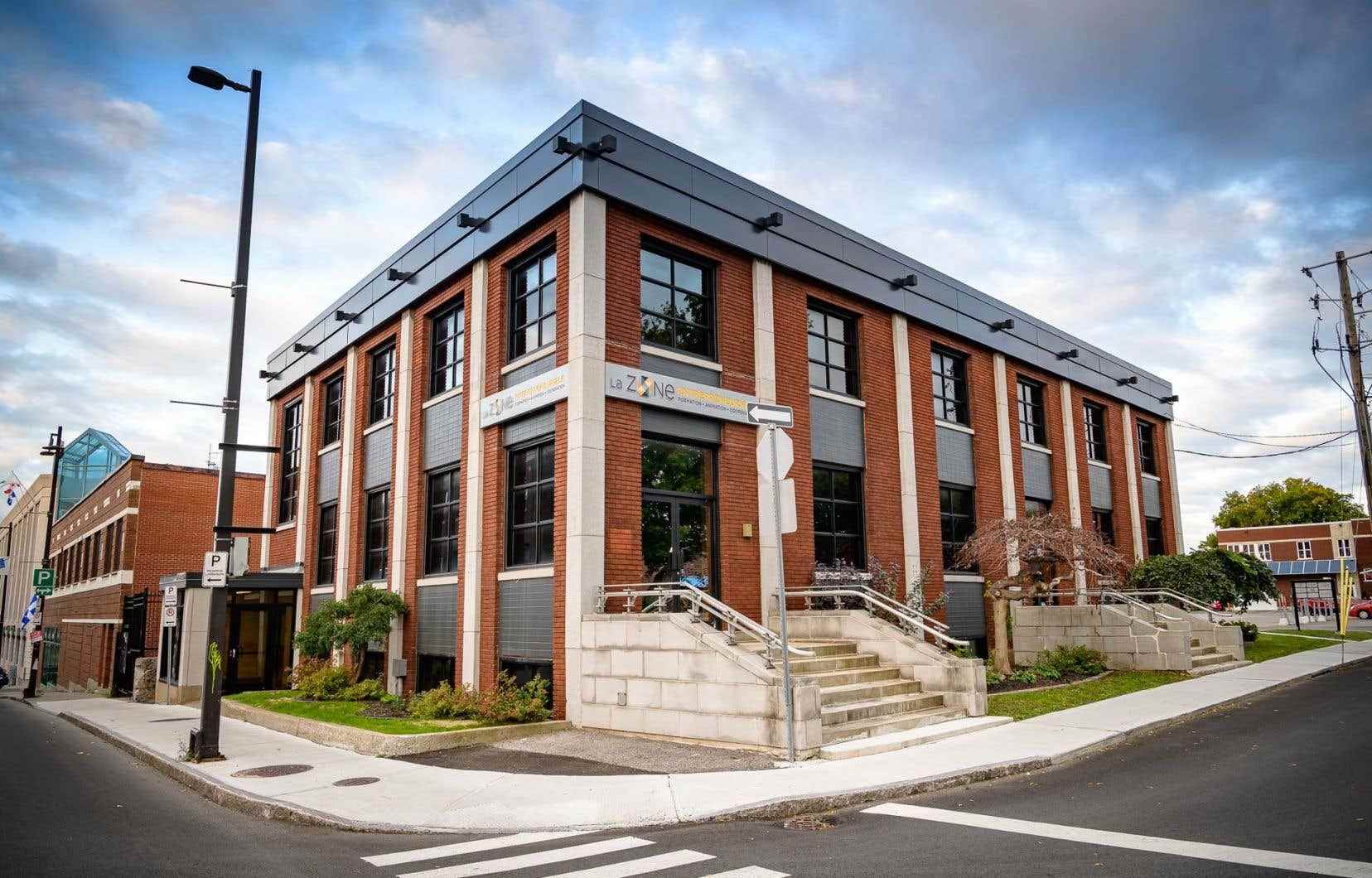This text is part of the special Real Estate section
Projects are multiplying give a second life to the babandoned industrial buildings in the Trois-Rivières area. Could they inspire other cities in the province?
A former prosperous industrial hub, the city of Trois-Rivières is full of abandoned urban and industrial buildings. In 2018, more than three million square feet of abandoned buildings littered the city’s territory, according to Innovation and Economic Development (IDE) Trois-Rivières, an organization whose efforts have made it possible to give a second life to several infrastructures.
Among the organization’s projects are the Rousseau Funeral Center, which now houses Espace 445, the former Dayco factory that has become Fabrique 9600, and the former Germain & Frère factory, which will become the center of agri-food innovation L’Ouvrage. The eleven industrial wastelands recovered by IDE Trois-Rivières now host 75 companies where 600 people work, says the organization.
“It is a city that is undergoing economic decline and deindustrialization, which has led to staggering unemployment rates, and impoverishment, contextualizes Mario De Tilly, general manager of IDE Trois-Rivières. These companies create jobs, and these people will pay taxes elsewhere in the city, continues the director on the cascading effects of the revitalization of the built heritage on the economy of the city. We know that cities need money, they are crumbling under expenses, and even more with possible inflation and recession. »
The success of the IDETrois-Rivières formula is generating interest in the province where such projects are rare, says De Tilly. Last May, IDE Trois-Rivières won the Joseph-Beaubien award from the Union of Quebec Municipalities for its innovative strategy in the rehabilitation of abandoned wastelands. “Many of our colleagues come to see us to find out how we proceeded,” comments Mr. De Tilly. We win prizes, we are proud. People are aware of the environmental impact [de notre démarche]. »
The transformation of the industrial wastelands of Trois-Rivières is inspired by projects, such as the technology park in the borough of Saint-Laurent and the Technopôle Angus, and even others on the European continent, such as in Hamburg, Germany. IDE Trois-Rivières benefits from valuable support from the municipality. “The most important thing was to have the will of the municipal council. These people were behind us to ensure our development,” says Mr. De Tilly.
Faced with the usual equation combining demolition and reconstruction, the City of Trois-Rivières is relying instead on the restoration of its built heritage in order to reduce urban sprawl and the destruction of natural habitats, or even to recycle materials which, otherwise would be discarded.
An eco-district on the drawing board
In the Cap-de-la-Madeleine sector, the old Aleris aluminum plant was demolished, leaving a huge wasteland to be decontaminated. In the meantime, the City of Trois-Rivières is considering transforming the sector into an eco-district.
“We are very much in favor of this idea of consolidating built spaces, optimal occupancy, densification and the vitality of the territory”, indicates Marc-André Godin, urban planner and deputy director for planning and sustainable development at the City of Trois -Rivers. In October, the urban planning team of the City of Trois-Rivières won the Development and Public Space prize awarded by the organization Rues Principales, which works to revitalize the hearts of communities.
“What drives us is integrated urban planning,” continues the urban planner. It is to bring the population to reoccupy the center of the city, the sectors which are more in decrepitude, the under-exploited lands, so as to create this urban way of life where we can consume our everyday goods at a distance walk, have public transit nearby. »
To propose a project with a participatory approach, the municipality creates co-creation activities and discussion tables with a group aimed at representing the diversity of the Trois-Rivières population. Public surveys will also be conducted to test the ideas selected. The project, still on the drawing board, will be proposed next June.
“It’s quite daring, we see it as one of the first major sustainable urban neighborhoods, or eco-districts, in Quebec,” says Mr. Godin. It’s a paradigm shift. This is new for entrepreneurs and promoters in Quebec who are used to developing on the outskirts of vacant lots. »
This special content was produced by the Special Publications team of the To have to, pertaining to marketing. The drafting of To have to did not take part.
